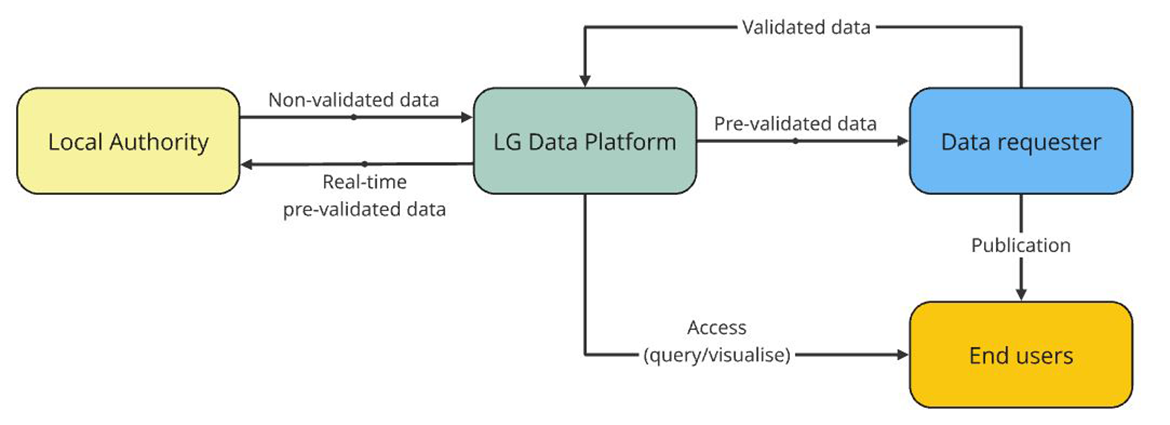For that data which is essential to evidence improvement in outcomes or that data which continues to be necessary for assurance purposes, improvements are required in the end-to-end data reporting process to deliver efficiencies, improved data quality, and greater data use.
To better understand the current data flow process and to identify priorities for improvement, we completed a mapping analysis of the processes, systems and resourcing involved in servicing data returns at present and examined how data is being used both locally and nationally. The annual Children Looked After return to Scottish Government provided a valuable use-case for this analysis with this return selected due to policy relevance and existing burden. The findings generated from this analysis are set out in ‘as-is and to-be data flow processes’, and an ‘improved data flow process’, and are considered common across other returns.
Challenges in the current end-to-end process
The key challenges identified in the current end-to-end process are summarised as follows:
- A lack of co-ordination in the data reporting asks of local government, in terms of timing, content and purpose
- An over-reliance on data collection approaches which do not support automated collection or validation of data, creating resource implications for both local government and Scottish Government, and also significant time lags in publication
- Data quality and completeness issues within local authority systems resulting in significant resource being focused on validation and checking of data before submission
- Configuration of current local authority data management systems which does not support ‘one button’ reporting, leading to the creation of complex, often manual and resource-intensive processes to prepare data for reporting
- Data architecture which does not support councils to maximise use of their own data asset, with progress needed to improve data flow, data sharing, data linkage, data analytics and data access to derive greater value from available data
- Limited internal capacity, skills, capability, leadership and workforce buy-in required to drive forward the data transformation agenda.
Further detail is available in the Learnings from the CLAS return document.
Changes in the data flow
Current state: Data requesters collect data directly from local authorities, using various methods and formats. They then collate and validate the data, before publishing it. This process usually takes months, during which the data cannot be used by local authorities. Even then, not all the data collected from local authorities may be published by the requester.

Future state: The data flows from local authorities to the local government data platform, which handles the orchestration of the data collection and pre-validates the data. The data is immediately available to local authorities, which can use it right away.
Requesters can access relevant data via the platform in the format that they need it and without delay. Once validated by the requester, the data is sent back to the platform in its final state. End users can access validated data stored in the platform.

Phone: 07747 711310
-
Phase 1 Final Report
The final report of the first (discovery) phase of the project.
-
The Crerar Review
Report of the independent review of regulation, audit, inspection and complaints handling of public services in Scotland.
-
The Verity House Agreement
Partnership agreement between the Convention of Scottish Local Authorities (COSLA) and the Scottish Government “setting out our vision for a more collaborative approach to delivering our shared priorities for the people of Scotland.”